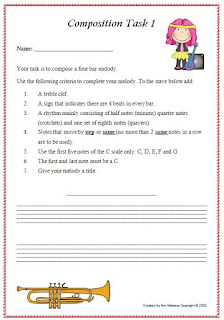After exploring the free version of Chromatik, I discovered
the program offered many educational and fun possibilities for my classroom.
The program ranges from various genres of music (classical to pop), which is
great for my students because they need variety of music that is easily
relatable and motivational. In
particular, my students would love the pop music, theme songs and chart toppers
that are available on Chromatik. There are many implementation approaches that
can be utilized by using the program. For example, the program includes
exercises that could benefit a student’s sight reading skills. Recently, I have been researching different
projects to start with DonorsChoose.
This web site helps you start a fundraiser where people can freely choose to
donate to your project. A few years ago, I was able to collect enough funds to
buy a beautiful rug for one of my classrooms. While using Chromatik, it gave
some ideas into creating a project that would supply ukuleles or possibly
keyboards. Students would be able to access Chromatik at any place or time,
which would supremely increase the amount of time students actually practice. The students would not only able to practice
scales and classical works but also, have a wide selection of music that would
appeal to their individual personalities.
Overall, the program, Chromatik has an ease of navigation
once you have explored and got a feel of how the site works. Initially, I
stumbled around looking for a way to access the sheet music; it was kind of
unclear at first. However, I quickly discovered that clicking your chosen
instrument twice leads to the sheet music/play-along video. If used in a
classroom, I would do a thorough introductory lesson about the program before
jumping right into it with your students.
Once school starts, we are all going to be surrounded by Pokémon
and Pokémon
Go. So, when I saw the theme song from Pokémon on Chromatik, I thought that
it would be an incredible opportunity for students to get excited about music,
while utilizing their skills as performers. Students are also able to record
and post their own sessions, while at home or on-the-go. These sessions can
also be assessed private and securely.
In my opinion, Chromatik would be a great starter program
into eventually using music notation software on a compositional level. I would
definitely consider taking advantage of the free trial with students to see if
this is a program to invest in or perhaps show Chromatik to my band director
colleagues to use.
SmartMusic is a very useful instructional tool for the
performance world. I have had some experience with SmartMusic and always
thought it was geared more towards the instrumental programs. I am also
familiar with its popularity and success in other local school districts and
especially for band. SmartMusic is an interactive music learning software
program that offers access at school and home. There are several benefits from
using this SmartMusic because it completely improves the traditional way of
practicing and student achievement at great lengths.
Band & Orchestra Directors
should definitely take full advantage of SmartMusic and its benefits to an
instrumental program. SmartMusic offers not only assessment, but also documentation
of student progress and success, which is so vital to teachers, parents and
especially the student. Tracking student progress can be very time consuming but
with SmartMusic, teachers can spend less time documenting and focus more on the
lesson itself. SmartMusic is also highly effective for beginner students.
For new learners using the program,
they have the capability of getting help whenever needed without relying on
parents. Most parents have no musical background and cannot provide assistance
when their child is struggling with practicing at home but with SmartMusic, it
can identify mistakes and provide immediate feedback. Another great feature
allows students are able to play along with other parts to see where they fit
in the piece and listen to the harmony. SmartMusic offers easy access to large
library of repertoire, which promotes students to explore and experience a
variety of music. When purchasing the software, there is also a microphone
(vocal & instrumental) to buy as well.
SmartMusic Demo by strobertchannel
Overall, both Chromatik and SmartMusic offer great possibilities in similar and different ways. Personally, Chromatik would be a good resource for incentives and rewards, whereas SmartMusic has the technical capabilities of documentation and immediate feedback. Chromatik does have an advantage by being a free program, however, it only allows three free plays a day. There is an option to upgrade but because I would use the program more as an incentive or reward, the free version could be applicable. SmartMusic is a paid subscription including the initial purchase of the microphone (around $30 for instrumental, $35 for vocal). Students would be required to maintain a yearly subscription of $40, which may not seem a lot for some but for the area I work in, many families would not be able to afford this. SmartMusic can definitely work without student subscriptions, but it would not be able to fully optimize the benefits of the program.


